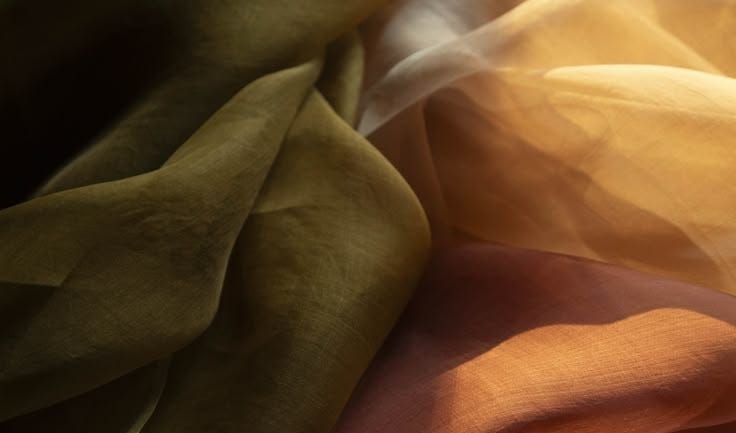Beyond Looking Good: 5 Ways Your Clothing Choices Affect Your Mental Health
The science and psychology behind how what we wear influences how we think, feel, and navigate our daily lives
We've long understood that clothing serves functions beyond basic coverage and warmth. What we wear communicates our identity, signals our belonging to social groups, and often reflects our mood. But emerging research and innovative brands are revealing something deeper: our clothing choices can significantly impact our mental health and cognitive functioning in ways most of us never consider.
During a recent conversation with Archie Clay III, founder of the mental wellness fashion brand Brain Love, I gained fascinating insights into the intersection of clothing and psychological wellbeing. While most fashion discussions center on aesthetics or trends, progressive designers like Archie are exploring how intentionally created clothing can serve as tools for mental wellness. This approach transforms fashion from mere self-expression into a practical support system for cognitive and emotional health.
The Chemical Reality of What Touches Your Skin
The materials touching our skin do more than just feel comfortable or uncomfortable. They can introduce chemicals that affect our bodies and, consequently, our mental states. This physiological connection between clothing and mental wellness remains under-discussed in mainstream fashion conversations.
During our conversation, Archie highlighted this concern: "We've been doing a lot of research and paying attention to what polyester is doing to our bodies and the plastics that are coming off the polyester that we don't even know is happening to us, going into our skins and our food and things of that nature." These microplastics shed from synthetic clothing don't just impact the environment. They enter our bloodstream through skin absorption and inhalation, potentially affecting hormone regulation and neurological functioning.
Natural fibers like organic cotton, hemp, and linen minimize exposure to these potentially harmful chemicals while allowing skin to breathe properly. This breathability regulates body temperature more effectively, which research has linked to better sleep quality, a fundamental factor in mental health maintenance. The connection between clean, natural materials and mental clarity exemplifies how ethical fashion business practices directly contribute to consumer wellbeing beyond surface-level benefits.
Conscious consumerism increasingly includes consideration of not just production ethics but also the physiological impact of materials on our bodies. Forward-thinking fashion for change brands recognize this connection, prioritizing both environmental sustainability and human health through careful material selection. This holistic approach represents the future of fashion with purpose, addressing multiple interconnected systems rather than treating aesthetics, ethics, and wellness as separate considerations.
Confidence Through Intentional Design
The psychological concept of enclothed cognition reveals that what we wear significantly influences how we think and perform. Beyond simply "dressing for success," specific design elements can trigger confidence, focus, and other positive mental states that enhance our daily functioning.
Archie's approach to design illustrates this principle: "If you put a piece on, it maybe wasn't as attractive, you'll still be attractive because of how you look and how you took time to curate your fit and align to your body type." This philosophy acknowledges that confidence comes not from adhering to trend-driven aesthetics but from thoughtful design that honors individual body types and personal expression, a cornerstone of fashion activism that promotes genuine self-acceptance rather than conformity.
Clothing designed with psychological wellbeing in mind often features elements that subtly enhance confidence: proper fit that honors rather than constrains natural body shapes, colors selected for their documented psychological impacts, and fabrics that move appropriately for different activities. These intentional design choices transform clothing from purely aesthetic objects into functional tools that support positive mental states throughout changing daily contexts.
Social impact fashion brands increasingly recognize the responsibility to design beyond visual appeal, considering how their creations will influence wearers' mental experiences. This deeper level of design intention represents a significant evolution from fashion that merely looks good to fashion that genuinely helps people feel good, a shift that particularly benefits those managing anxiety, depression, and other mental health challenges in their daily lives.
The Environmental Connection to Mental Wellness
The relationship between environmental sustainability and mental health creates another dimension through which clothing affects psychological wellbeing. Growing awareness of fashion's environmental impact has created cognitive dissonance for many consumers, discomfort that mission-driven brands are addressing through transparent practices.
Archie's commitment to sustainability links directly to mental wellness: "We understand that if we're gonna be this brand, Brain Love, and we're gonna be a brand that's focused on mental health and wellness and holistic living, then we have to make sure that we are focusing on the fabrics and the fibers of our product." This integration acknowledges that genuine mental wellness cannot exist separate from environmental responsibility. The anxiety generated by participating in destructive systems undermines any surface-level benefits fashion might otherwise provide.
Sustainable fashion business practices create what psychologists call "value alignment," the mental harmony that comes when our actions match our beliefs. When we wear clothing created through ethical processes using sustainable materials, we avoid the subtle but significant cognitive stress that comes from value misalignment. This environmental coherence contributes to mental wellness in ways that transcend the immediate physical experience of wearing the garment.
The community-focused fashion movement further enhances this connection by making sustainable choices more accessible and normalizing conversations about fashion's environmental footprint. Collective movement toward more responsible consumption patterns reduces the isolation many feel in trying to make better choices individually. This community aspect transforms what could be an anxiety-producing individual burden into a shared journey toward both environmental and mental wellbeing.
Identity Expression and Belonging
Clothing serves as a powerful tool for communicating identity and fostering belonging, both crucial elements for mental health. The psychological security that comes from authentic self-expression and community connection cannot be overstated, particularly for individuals from marginalized communities.
In discussing Brain Love's aesthetic inspiration, Archie referenced the 1970s and 1980s: "It was so earthy and fun and loving. You can tell that they took time to curate their fit and align to their body type." This observation highlights how fashion storytelling through historical reference points creates continuity of identity across generations, a significant factor in psychological grounding and cultural belonging that black-owned fashion brands and other culturally-rooted enterprises uniquely provide.
Wearable activism takes identity expression further by allowing individuals to literally wear their values, creating immediate visual community with like-minded others while initiating conversations with those holding different perspectives. This function of clothing as conversation starter and community builder helps combat the isolation that often accompanies both activism and mental health challenges, creating bridges between personal values and collective action.
Social justice fashion provides particularly important psychological benefits for individuals whose identities face marginalization. When clothing directly challenges harmful narratives or celebrates underrepresented cultures, it creates psychological safety through visibility and affirmation. This protective function transforms fashion from purely aesthetic consideration into an active tool for psychological resilience and community building, essential components of sustainable mental health.
Ritualistic Aspects of Dressing
The daily ritual of selecting and putting on clothing offers an often-overlooked opportunity for mindfulness practice and transition signaling that benefits mental health. When approached intentionally, this routine can function as a powerful psychological tool for context shifting and mental preparation.
Brain Love's approach acknowledges this ritual dimension: "How do you date yourself? How do you continue to evolve with someone, your family, your friends around you?" These questions reframe clothing selection as a form of self-relationship and context preparation rather than merely aesthetic decision-making. This ritualistic approach transforms daily dressing from potential stress point into grounding practice that enhances mental readiness for different social contexts.
Fashion with purpose includes consideration of how clothing facilitates transitions between different roles and environments, a psychological function particularly important in our increasingly boundary-less work-life integration. Garments designed with clear contextual purposes help signal to both wearers and others when role transitions occur, creating psychological clarity that reduces the mental load of constant context-switching that characterizes contemporary life.
Impact fashion brands increasingly incorporate ritual aspects into both their designs and customer education, helping wearers develop more intentional relationships with their clothing. From selecting pieces that mark specific transitions to caring for garments in ways that foster appreciation, these ritualistic elements transform fashion consumption from mindless acquisition into mindful practice that supports rather than depletes mental resources.
The Path Forward: Conscious Closets, Healthier Minds
The emerging understanding of clothing's impact on mental health suggests practical steps anyone can take to create a wardrobe that supports psychological wellbeing alongside physical needs and aesthetic preferences. This integrated approach transforms fashion from potential stressor into active wellness tool.
First, consider auditing your wardrobe for chemical exposure by gradually replacing synthetic items with natural-fiber alternatives, particularly for pieces that touch your skin directly for extended periods. This transition need not happen overnight. Even replacing basic items like underwear, sleepwear, and everyday t-shirts with natural-fiber versions can significantly reduce cumulative chemical exposure that may impact mental clarity and emotional regulation.
Second, experiment with intentional dressing by noticing how different garments affect your mental states throughout the day. Which pieces make you feel confident during important meetings? Which facilitate focus during deep work? Which support relaxation when unwinding? Creating consciously categorized clothing collections based on these observations allows for more strategic dressing that supports rather than undermines mental needs in different contexts.
Finally, consider the holistic impact of your fashion choices by supporting ethical entrepreneurship and values-driven business practices that align with your personal ethics. The mental harmony that comes from value-aligned consumption creates subtle but significant improvements in daily psychological wellbeing. Progressive brands like Brain Love demonstrate that fashion can simultaneously look good, feel good, and do good, an integrated approach that benefits both individual consumers and collective wellbeing.
Rethinking Fashion as a Wellness Tool
Our clothing choices impact far more than our appearance. From the chemicals we absorb through fabric to the psychological states triggered by design elements to the cognitive harmony created through value-aligned consumption, what we wear significantly influences our mental wellbeing. Progressive fashion brands increasingly recognize this connection, creating garments that serve as active tools for psychological health rather than mere aesthetic expressions.
This evolution moves fashion beyond surface-level concerns into deeper territory where clothing becomes part of our wellness infrastructure. Just as we recognize that nutrition, exercise, and sleep quality fundamentally impact mental health, emerging research suggests our wardrobe choices deserve similar consideration as factors in psychological wellbeing. This perspective transforms fashion from luxury or vanity into essential wellness investment.
How has your clothing affected your mental states? Have you noticed connections between what you wear and how you feel throughout the day? What changes might you make to create a wardrobe that better supports your psychological needs? Share your experiences and insights in the comments. Together, we can develop more intentional relationships with fashion that support both individual and collective wellbeing.









